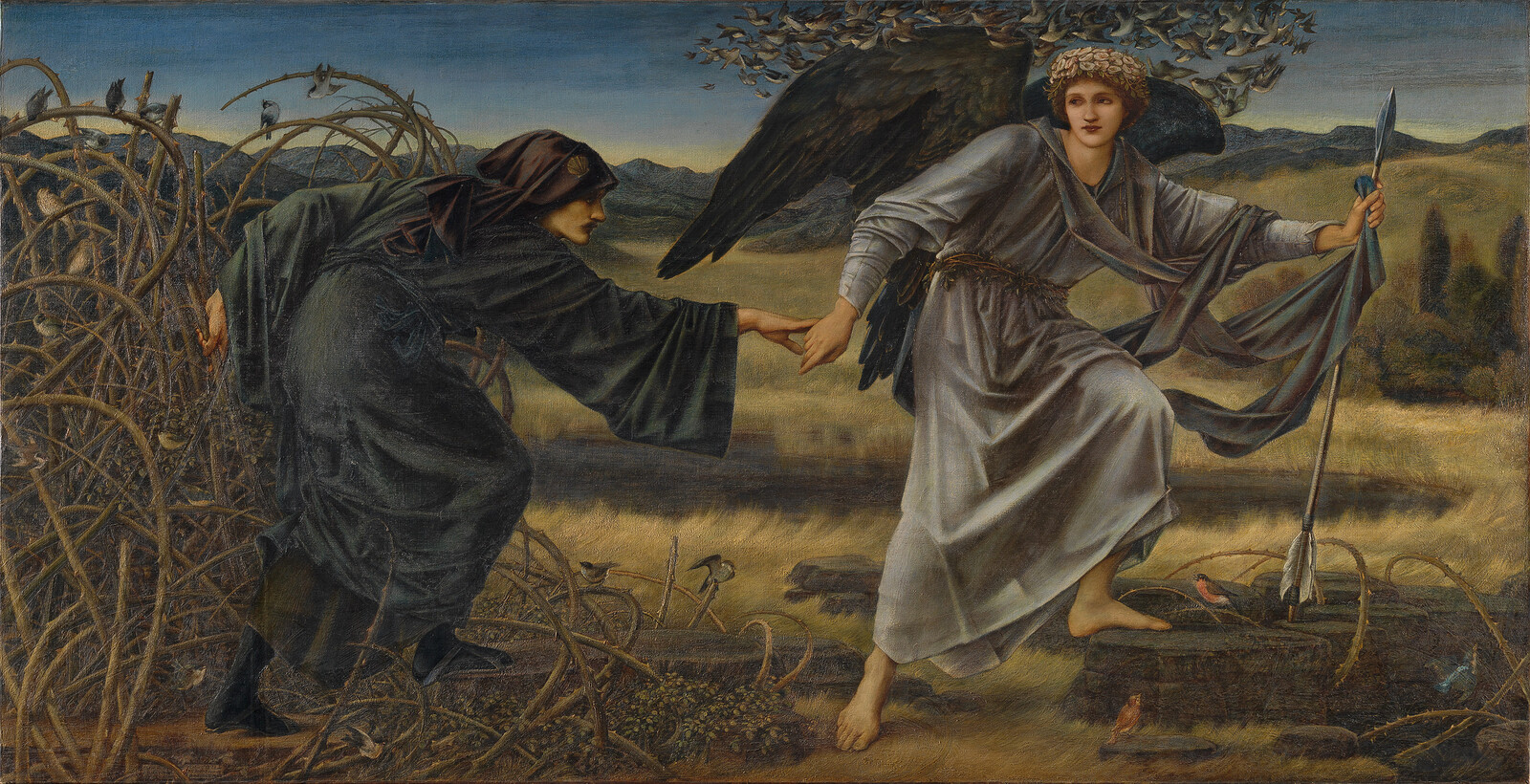February 21–May 31, 2020
The extravagant exhibition Edward Burne-Jones: The Pre-Raphaelites and the North opens February 21 at KODE Bergen Art Museums. The presentation includes monumental paintings, drawings and textiles overflowing with myths and wistful beauty, but also reveals the British artist´s influence on Scandinavian art and design.
The exhibition at KODE presents an artist who cultivated beauty above all: Edward Burne-Jones (1833–1898). The visionary British artist was among the most famous and celebrated artists of his time, both at home and internationally, and this is the first time he is being presented in Norway.
At the age of 22 Burne-Jones abandoned his theology studies to become an artist. He spent his apprentice years among the Pre-Raphaelites—an art movement that rebelled against academic art and the conventions of the period. His motifs were often drawn from medieval legends and ancient myths. Burne-Jones presents a world of beauty and mysticism that is otherworldly and is considered a pioneer of European Symbolism.
A movement that influenced the North
Burne-Jones worked in a combination of craft disciplines, such as painting, weaving and book illustration. Together with his friend, the designer William Morris, he was one of the leading figures in the Arts and Crafts Movement, which would have a great impact on the international art world, including in the Nordic countries.
The movement promoted handicraft above mass production, as a reaction to the industrial revolution. The notion of “beauty in everything, beauty for all” was ingrained in the movement and was a form of social action—a belief that attractive surroundings influenced a person in a positive way.
An important aspect of the exhibition is an in-depth presentation of how Burne-Jones, the Pre-Raphaelites and the Arts and Crafts Movement influenced artists in the North. Shown here are works by Nordic artists such as Frida Hansen, Gerhard Munthe, Gustav Vigeland, Edvard Munch, Olaf Lange, Richard Bergh, Agnes Slott-Møller, and more.
Historic collaboration
The exhibition is a collaboration with Tate Britain, London, Prins Eugens Waldemarsudde, Stockholm, and the Nordic Institute of Art. More than 30 works are on loan from Tate Britain, such as the masterpiece Love and the Pilgrim (1896–97) and the monumental tapestry The Adoration of the Magi (1890) from Manchester Metropolitan University’s Special Collections, the latter created together with William Morris.
A number of art institutions and private collectors have also contributed works: Musée d’Orsay, British Museum, Manchester Art Gallery, the National Gallery of Denmark (SMK), Sorø Art Museum, Kungliga Biblioteket, De Kongelige Samlinger, Stavanger Art Museum and the Vigeland Museum.
The curators of the exhibition are Knut Ljøgodt (Nordic Institute of Art) and Alison Smith (National Portrait Gallery, London), in collaboration with Karin Sidén (Prins Eugens Waldemarsudde) and Line Daatland (KODE).


